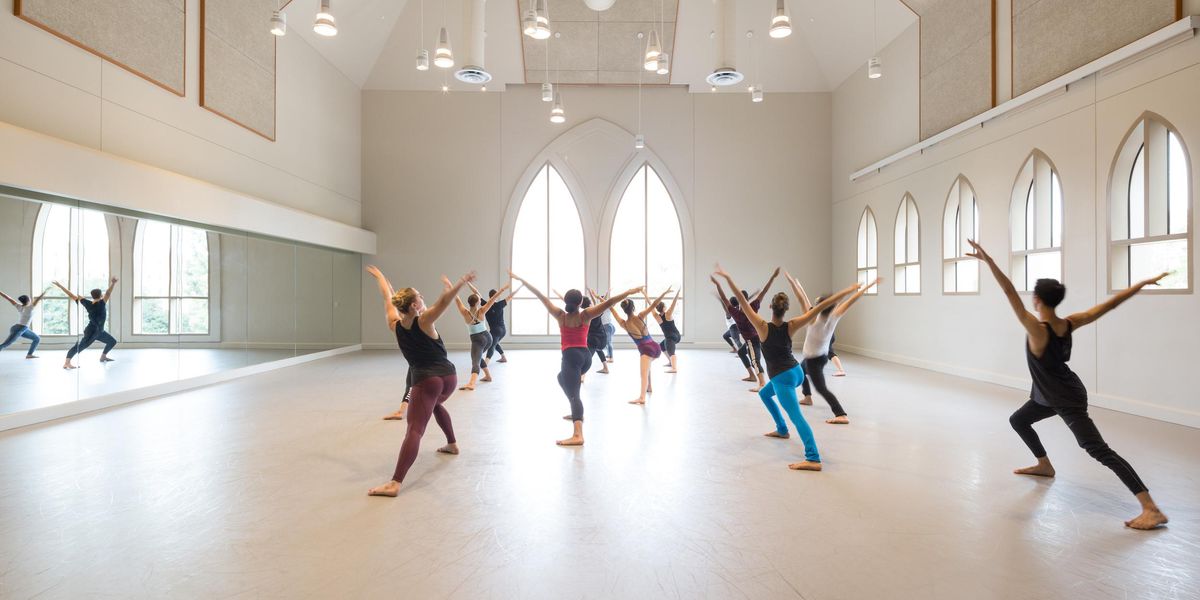Planting New Roots, and "Deep Roots," in Brooklyn
One night this past winter, as I was coming out of the subway on my usual route home from work, I noticed an African dance class going on in the building across the street. Keeping the beat for dancers in colorful skirts, a row of drummers sat by the panoramic, second-floor windows, their music loud enough to be heard out on Flatbush Avenue, mingling with the sounds of rush-hour traffic. It was a welcome infusion of something very human into a rapidly developing part of Brooklyn, where a new high-rise seems to spring up every day, and which, despite the proximity of two major cultural institutions (Mark Morris Dance Center and Brooklyn Academy of Music) can feel overwhelmingly commercial.
Of course, “African dance” means many things, as reflected in the extensive offerings at this new studio, Cumbe Center for African and Diaspora Dance. The schedule includes Afro-Haitian, Afro-Colombian, Afro-Brazilian, Afro-Cuban, West African, Senegalese, and Congolese dance, along with contemporary (taught by none other than Ronald K. Brown), and hip hop, among many other classes.
While I’ve been admiring Cumbe from afar, I hadn’t actually set foot inside until recently, when the studio hosted an event that I simply couldn’t miss: two days of workshops and performances with Juan de Dios, a revered master of Afro-Caribbean folkloric dance and music who, largely because of travel restrictions between the U.S. and his native Cuba, hadn’t been to New York since 1977. Joined by members of his Havana-based company Raices Profundas, de Dios (whose full name is Juan de Dios Ramos Morejon) arrived after a week of sold-out shows at the San Francisco International Arts Festival.
Juan de Dios (in blue cap) playing music for class at Cumbe
In New York, despite the lapse of 35 years since his last visit here, his following appears to be no less enthusiastic. On the morning of Saturday, May 12, students filled the largest of Cumbe’s sleek studios, wall-to-wall, for the first of three classes that day (and the only one I was able to attend): Vudun, or dances from the Afro-Haitian tradition, led by Raices Profundas members Onaily de la Candad Rojas Sauchy (who goes by Dori) and Leonel Menendez Murray. In a corner of the studio, de Dios—a quiet, mischievous presence—was one of several percussionists providing the infectiously rhythmic pulse that would drive the next hour of dancing.
It didn’t matter that Dori spoke little English, or that my Spanish has waned considerably since I traveled to Cuba during high school, an experience that sparked my interest in this type of dance. Her body communicated, with formidable clarity and power, what we most needed to know: That this is movement imbued with an almost violent strength, animal alertness, and ecstatic energy, rooted in the ground but radiating outward.
Dori, of Raices Profundas, teaches a Vudun class at Cumbe
After a short, basic warm-up, Dori and Leonel took us through a phrase that slowly built in complexity. Progressing across the floor, we formed rows of stamping feet, slashing arms, swinging skirts (the more experienced students knew to bring these with them), thrusting chests, and shaking shoulders. Those shoulders, Dori told me, should never stop moving, which presented me with some serious coordination conundrums: How to keep the shoulders going in one rhythm and the feet in another? I tried not to think too hard and to remember, instead, what Dori stressed when she noticed our faces glazing over with thought and I-must-get-this-right tension: “Todo baila,” she said, pointing to her wide-open eyes, then circling her face with her index finger. Everything dances.
That night, I returned to Cumbe to see Dori in action again—this time as a performer with Raices Profundas. The name of the 37-year-old company, which means “deep roots,” reflects de Dios’s commitment to preserving the most original version of sacred Afro-Caribbean dances; as far as his own work goes, he has no interest in “fusion.”
Dori as Yemaya
When I arrived at 10 p.m. for the part-Latin-dance-party, part-performance in his honor, I didn’t quite expect to be waiting until 12:30 a.m. for members of Raices, delayed by some logistical snafus, to take the stage. But when they did, with an ensemble of percussionists and singers behind them, it was worth the wait. Dori, embodying the Orisha (Yoruba saint) Yemaya, goddess of the ocean, jolted, shuddered, and spun as if propelled by a roiling sea inside of her. Almost rabid in her intensity, she was a vortex, the eye of a storm. Like a passing tornado, she soon made way for the equally transfixing Jorge Amado Perez Machado. As Changó, the Orisha of fire, lightning, and thunder, he was an unstoppable blaze of flickering limbs, consumed by the music and consuming us.
In the presence of such electric performers, you become blissfully unaware of minutes ticking by—even at 1 a.m. When the show ended, I only wanted it to keep on going. At the very least, the next time I take class at Cumbe, I’ll be able to call up that image of abandon, seared into my mind, when I start thinking too hard. —Siobhan Burke
Jorge Amado Perez Machado as Changó
Learn more about Cumbe this weekend at BAM’s
DanceAfrica Bazaar
, and check the studio’s special Memorial Day schedule.
All photos by Yevgeniy Skaradinskiy, Courtesy Cumbe.




